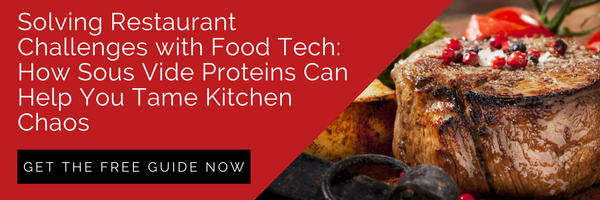
QSR and fast casual restaurants face increasing competition from convenience and grocery stores. That’s because customers are increasingly drawn toward food they can buy and eat fast. Modern consumers are constantly on the go; they need meals ready to eat right out of the package. And quick-marts and convenience stores have learned the language that attracts them, according to QSR Magazine contributor Daniel P. Smith.
“Forget your grandfather. These aren’t even your father’s convenience stores,” Smith wrote. “There are menus touting spicy chorizo and smoked Gouda on ciabatta, baked tilapia and arabica coffee. There’s signage broadcasting terms like artisanal, organic and free range.”
Snackification has become big business for food marts and groceries.
Grab-and-go items are no longer limited to high-fat, carb-laden, sweet and salty. Healthy snacks, gourmet snacks and protein-based snacks are commanding the market.
But snacks aren’t the only method by which groceries are competing with QSR. Over the last decade, the line between traditional fast food outlets and convenience outlets has become considerably blurred. Many convenience stores now play host to fast food counters in their own right.
Subway, Tim Horton’s, Wendy’s, Dunkin’ Donuts — all are now common sights in gas stations and truck stops around the country.
“Once a world of smokes, Cokes, and salty snacks, a utilitarian environment to enter and exit but certainly not linger, convenience stores have morphed into something different, something almost unthinkable even a decade ago: a place for dining and a viable alternative to traditional quick-service restaurants and even their fast-casual brethren,” Smith wrote.
But traditional QSR franchises aren’t down for the count. There are several key areas in which fast food can compete for its share of the grab-and-go set.
One of those areas is the breakfast daypart.
Fast food breakfast sales are growing even as sales in other dayparts remain flat. A study of the industry by NPD Group published this year forecast that fast food breakfast sales will grow 5 percent by 2019 — outpacing anticipated US population growth.
Morning customers are looking for protein choices that can be bought quickly and eaten during their commutes: egg-and-cheese biscuits, sausage burritos, chicken-and-waffle sandwiches and the like. The catch is that those items need to be ready to sell right when customers roll in — a long drive-thru or counter line can send grab-and-go customers down the road and to a competitor. As you will learn here, sous vide proteins can help fast food restaurants meet that demand for immediacy.
Because sous vide proteins are slow-cooked under vacuum seal, they retain their moisture and a tender texture. They also have a long shelf life. All they need is a quick final seasoning and simple retherm before they’re ready to eat. That cuts down on kitchen prep and grill time. And it gives your fast food restaurant an edge in competing with convenience stores or groceries that sell ready-to-eat proteins.
Another opportunity to compete is healthy, eat-in-package salads.
Grab-and-go items work because they aren’t messy. The consumer can open the package, eat the food and be done. No dishes to clean up — only a wrapper to throw away.
Customers today also want healthy. What’s healthier than a salad topped with a lean protein?
Some fast food companies have successfully married those concepts with “salad shakers” — single-serving salads in lidded cups. Consumers pour in dressing, shake to coat, then eat. Simple and healthy. This is another product for which sous vide proteins could be employed.
Since sous vide items are completely cooked, all a fast food restaurant would need to do is sell the pre-cooked meat or egg as an add-on to a salad shaker, or add the sous vide protein directly to the salad shaker cup prior to serving. They also allow QSR restaurants to expand their offerings away from traditional burgers or fried chicken.
Incorporating sous vide steak, Canadian bacon or ham, grilled chicken and other topping meats into existing salad items allow a fast food restaurant to meet customers’ demands for high-quality, healthy ingredients with maximum flavor and minimum additives. It also allows them to overcome consumers’ preconceptions about standard “burger-and-fry” fare.
Sous vide items improve QSR consistency.
Finally, fast food companies understand that consistency is a driver of success. But it’s notoriously hard to achieve across outlets — or even across shifts.
It’s virtually impossible to overcook when cooking sous vide. That means that incorporating sous vide protein choices into your existing menu can help guarantee consistency in the preparation of each menu item, at each of your store locations, no matter how inexperienced your staff may be.
Could sous vide be your QSR company’s answer to convenience store and grocery competition?






